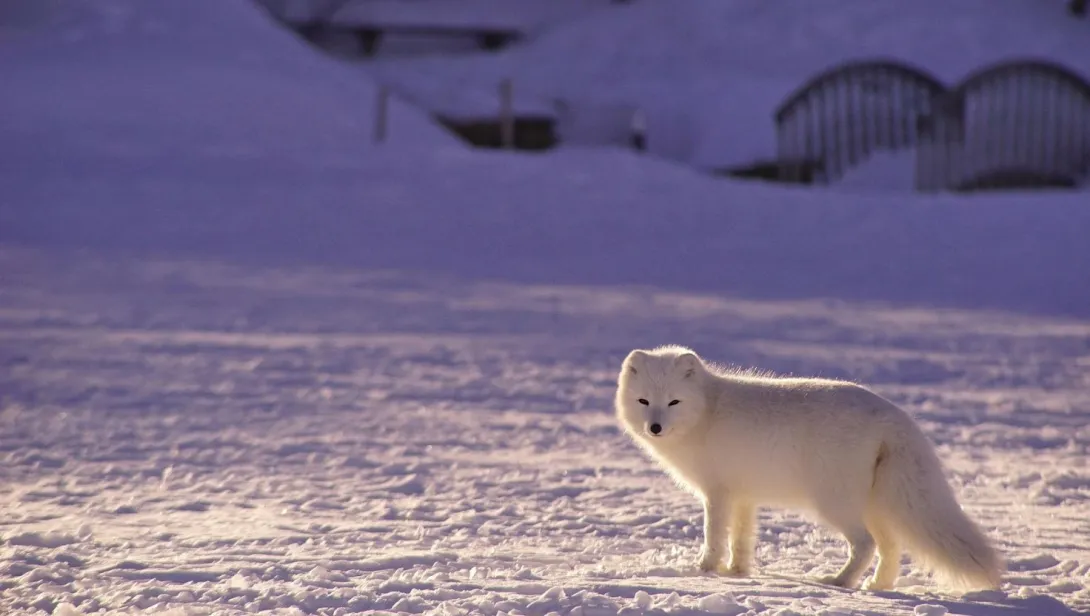Skip to main content
General Information
- The Arctic Fox (Vulpes lagopus) is a small, resilient mammal native to the Arctic regions of the Northern Hemisphere.
- It is well adapted to survive in extreme cold, with thick fur and a compact body.
- Arctic foxes are found in Alaska, Canada, Greenland, Iceland, Norway, Russia, and Sweden.
- They are opportunistic omnivores, feeding on small animals, carrion, and vegetation.
Physical Characteristics
- The Arctic Fox has a thick, double-layered coat that provides insulation against freezing temperatures.
- Its fur changes color with the seasons: white in winter for camouflage and brown or gray in summer.
- It has a bushy tail that helps maintain warmth and balance.
- Arctic foxes have small ears and a compact body to minimize heat loss.
- They typically weigh between 3 to 9 kg (6.6 to 20 lbs) and measure up to 68 cm (27 inches) in body length.
Adaptations to the Arctic
- The thick fur provides insulation, allowing survival in temperatures as low as -50°C (-58°F).
- They have fur-covered paws that protect against frostbite and allow them to walk on snow.
- Their keen sense of hearing enables them to detect prey moving beneath the snow.
- They can survive long periods without food by relying on stored body fat.
- Arctic foxes use snow dens to shelter from harsh weather.
Diet and Hunting
- Arctic foxes are mainly carnivorous but can also eat plants and berries.
- Their diet includes lemmings, voles, hares, birds, fish, and carrion.
- They often follow polar bears to scavenge leftover seals.
- In winter, they hunt by diving into the snow to catch hidden prey.
Reproduction and Lifespan
- Arctic foxes mate in early spring, and their gestation period lasts about 52 days.
- A female gives birth to 5 to 14 pups in a den.
- Both parents participate in raising and feeding the young.
- Arctic foxes typically live for 3 to 6 years in the wild and up to 14 years in captivity.
Behavior and Social Structure
- Arctic foxes are usually solitary but form pairs during the breeding season.
- They are highly territorial and defend their dens from intruders.
- In summer, they build complex underground dens that provide shelter.
- They communicate using barks, chirps, and body language.
Threats and Conservation
- The main threats to Arctic foxes include climate change, habitat loss, and food scarcity.
- In some regions, they are hunted for their valuable fur.
- Competition with red foxes, which are expanding northward, is also a challenge.
- Conservation efforts focus on protecting habitats and controlling red fox populations.
Interesting Facts
- Arctic foxes have one of the warmest furs of any animal in the Arctic.
- They can survive for weeks without food by slowing their metabolism.
- Arctic foxes can travel over 3,000 km (1,800 miles) in search of food.
- They are known for their playful and curious nature.
- The Arctic fox is a symbol of resilience and adaptability in extreme environments.
